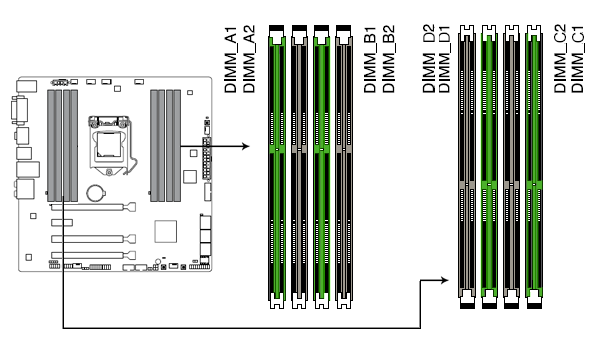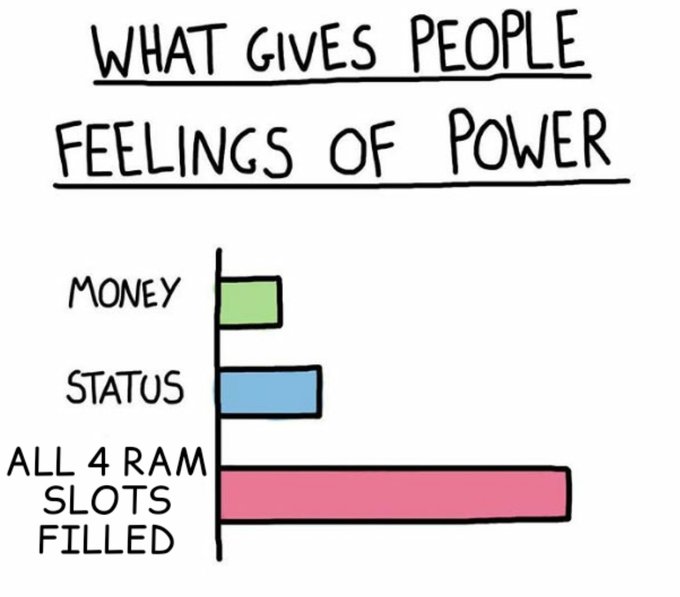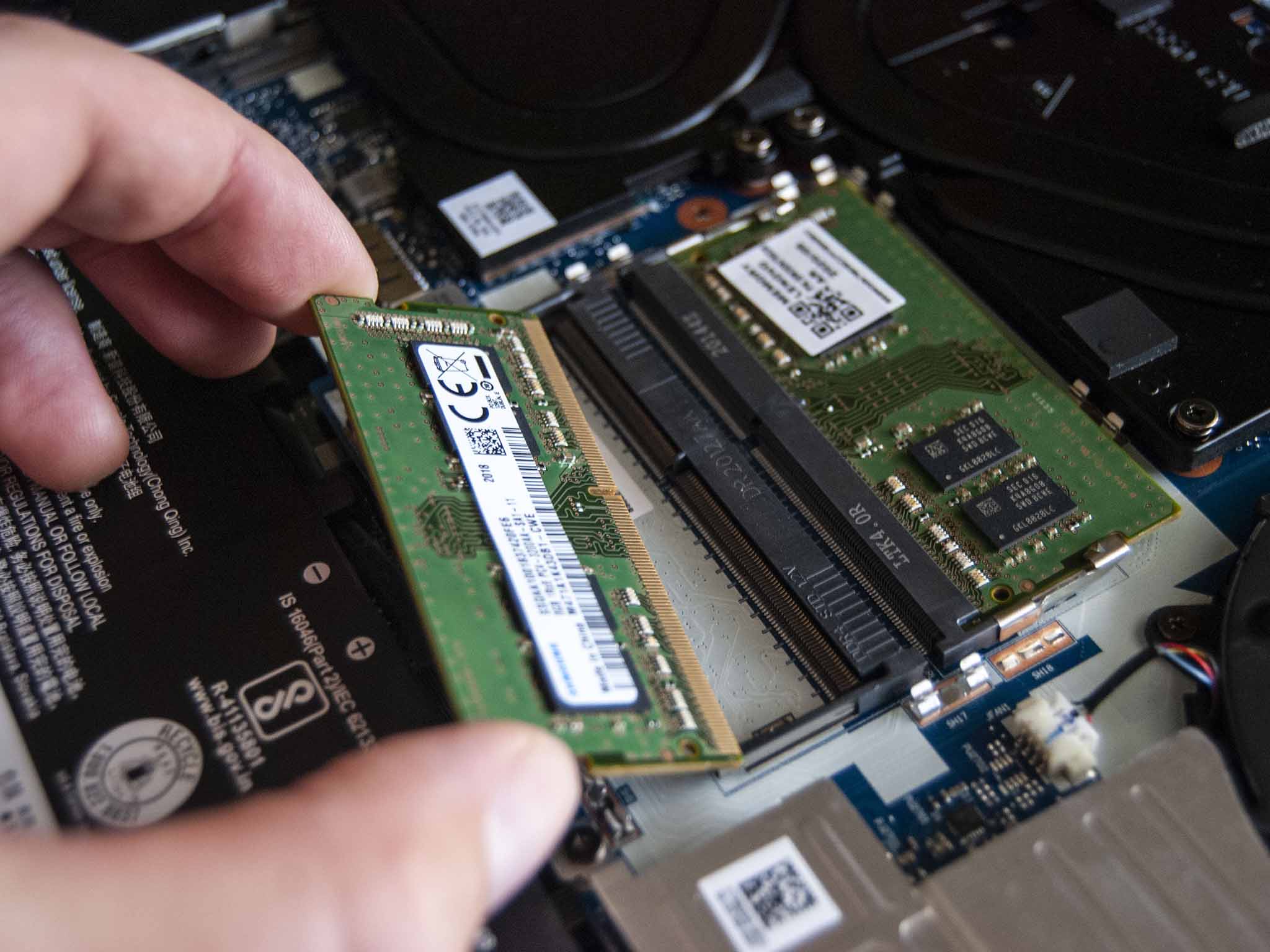I've got an Asus P5B Deluxe motherboard. Today I tried adding some new RAM to take it from 4GB to 8GB. The board is about 6 years' old. I've never used the black RAM slots before, only the yellow ones (2x2GB in slots 1 and 3).
My system only sees 6GB, not 8GB. I've tried various combinations of the RAM, get the same result.
To check the new RAM wasn't defective, I tried it in slot 1, a known good slot. All 4 sticks of RAM worked in slot 1, so the RAM wasn't faulty.
All 4 sticks work in every slot except slot 2 (the first black RAM slot). If I put any stick in slot 2 - old or new - the PC is dead, it won't even boot to the BIOS.
So it looks like I have a defective RAM slot.
Does anyone know of any way to fix this? The board is too old to RMA. I've tried an emery board down the defective slot, and I've tried squirting WD40 down it. No improvement.
Does anyone have any other ideas on how to get that bad slot working?
Thanks!
- Do You Have To Fill All Ram Slots Free
- Do You Have To Fill All Ram Slots
- Do You Need To Fill Both Ram Slots
In addition to the type of RAM you need to buy, the scanner will also tell you how many empty slots are available. Sometimes there will be two or more, other times there will be none. If your PC has no empty slots available you’ll have to remove a couple of the existing RAM modules and replace them with the new ones so be sure to take that. No, will be better w/ 4x8GB, less stress on the MC (memory controller) with only 4 sticks and ever so slightly better performance, only fill all slots if maxing out the DRAM 0. First, answer this question: How many physical slots do I have per ram channel? This will probably depend on your processor, although sometimes, a further limitation may be placed by your motherboard.

Summary :
It is extremely important to make a RAM compatibility check when purchasing a new RAM, right? If the RAM is not compatible with your motherboard, your computer won’t run as normal. How to check RAM compatibility? Let’s explore this question together with MiniTool.

Quick Navigation :
Why Check RAM Compatibility

Do You Have To Fill All Ram Slots Free
Does RAM matter? RAM is an integral component of your system. Once your RAM gets damaged or incompatible, your computer will not operate properly. It is necessary for your processor to run an operating system and different programs on the computer.
Usually, the more RAM you have installed, the faster your processor can handle and the more process your computer can run at a time. However, the RAM storage capacity depends on your motherboard specs can support.
So, it is necessary to make a RAM compatibility check before upgrading RAM. How to check RAM compatibility? Is my RAM compatible with any motherboard? Please keep reading to get the answers.
Is My RAM Compatible with Any Motherboard
When it comes to RAM compatibility, it is inevitable to discuss the motherboard. In fact, the RAM compatibility checking depends on what motherboard you have installed. As is well known to us, there are all types of RAM memories such as DDR3, DDR4, and so on. Not all RAM chips can mix and match the memory slot of your motherboard.
For example, if your motherboard was designed for DDR4 RAM, the memory slots of your motherboard cannot fit other types of RAMs like DDR3. Besides, the motherboard memory slots usually are integrated into the board and cannot be changed.
So, it important to make a memory compatibility check on your motherboard.
How Do I Know My RAM Compatibility
How to check RAM compatibility for your computers? Your operating systems and motherboard are 2 important components that have great significance on the RAM compatibility. So, you need to know your system information first. After that, you can refer to the following information to make a RAM compatibility check.
Do You Have To Fill All Ram Slots

Here’s a way to check your Windows 10 system information.
Step 1. Press Win + E keys to open the File Explorer.
Step 2. Right-click This PC on the left side and select Properties to open the system information window. Then you will see the current Windows edition as well as the system type.
The operating systems will affect the maximum capacity of RAM you can use on your computer. Compared to the consumer editions, a typical server Windows version can support several times the maximum RAM.
Usually, the Windows 8 Enterprise and Professional editions can support a maximum of 512GB RAM, while the consumer version only supports up to 128GB. Windows 10 operating systems have similar RAM limits. You can refer to the information from Microsoft.
Do You Need To Fill Both Ram Slots
It is different between a 32-bit and 64-bit processor as well. Without considering the Windows editions, a 32-bit system has the limitation of 4GB physical memory, while a 64-bit system can be able to handle a 128GB RAM physical memory.
In addition, your motherboard also determines how much RAM your computer can support. This is because your motherboard has a memory module slot limit. If you don’t know how to check the motherboard model, please read this post.
Here are several common memory types that you can refer to:
- DDR 2 SDRAM: This technology is commonly found in those computers that are made after 2003.
- DDR3 SDRAM: It is suitable for those computers made after 2007.
- DDR4 SDRAM: It is the newest RAM type. So, please make sure you are using a modern PC with the latest builds.